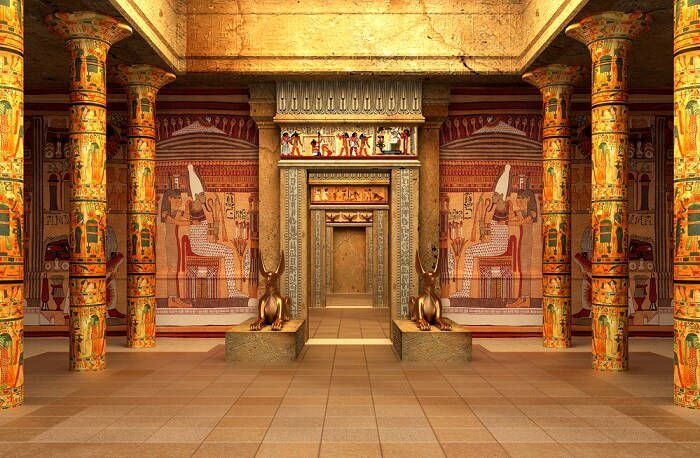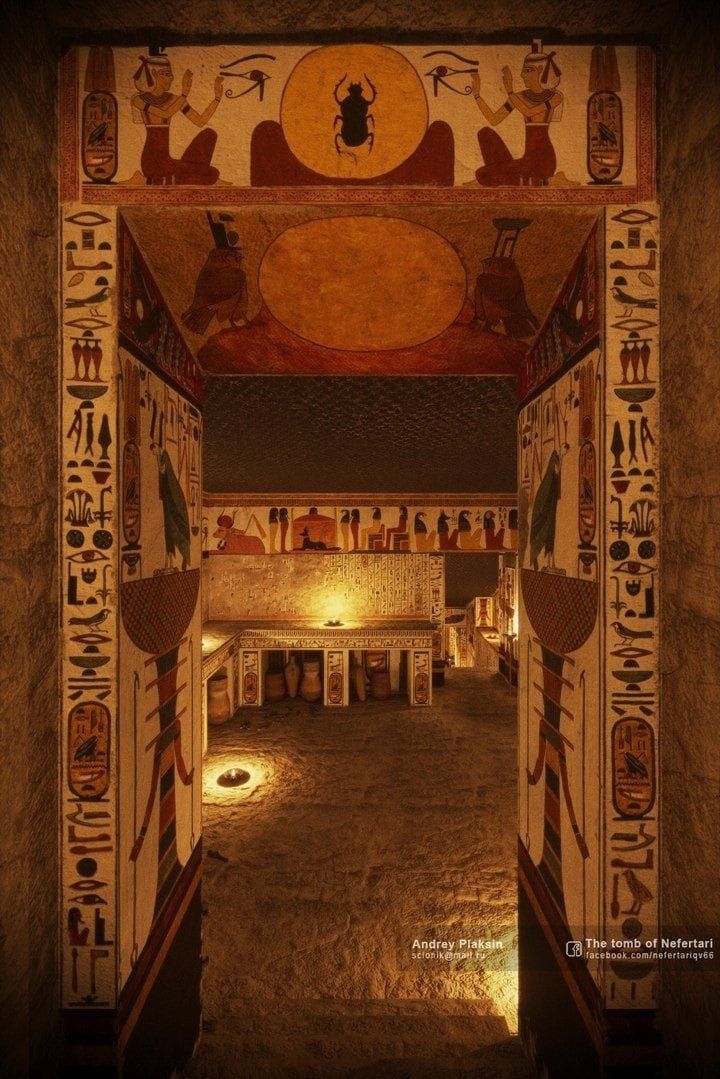Tomb Of Nefertari, The Great Wife Of Pharaoh Ramesses Ii, In Egypt’s Valley Of The Queens

Nestled within the ancient and mystical Valley of the Queens in Egypt, the Tomb of Nefertari stands as a testament to the grandeur and significance of this legendary queen, the Great Wife of Pharaoh Ramesses II. This sacred sepulcher, renowned for its opulent beauty and historical importance, unveils a captivating narrative that intertwines love, power, and the afterlife.
Dating back to the 13th century BCE, the Tomb of Nefertari, also known as QV66, represents a pinnacle of ancient Egyptian funerary art. As the beloved wife of Ramesses II, Nefertari held a prestigious position, and her final resting place reflects the reverence and devotion bestowed upon her. The tomb, discovered in 1904 by Italian archaeologist Ernesto Schiaparelli, unveiled an unparalleled masterpiece of mural paintings and intricate hieroglyphics.

The walls of Nefertari’s tomb are adorned with vibrant frescoes that depict scenes from the Book of the Dead, showcasing the queen’s journey into the afterlife. The intricate details and vivid colors attest to the advanced artistic skills of the ancient Egyptians, capturing the essence of their religious beliefs and the profound rituals associated with death and resurrection.
The scenes within the tomb offer a glimpse into the life of Nefertari, depicting her in various ceremonial and religious contexts. The images portray her participating in rituals, receiving blessings from deities, and engaging in acts of worship. The meticulous craftsmanship and attention to detail underscore the significance of Nefertari’s role not only as a queen but as a spiritual figure preparing for the journey beyond.

The architectural marvel of the tomb itself is noteworthy, with a descending corridor leading to a spacious antechamber and ultimately to the burial chamber. The celestial-themed ceiling of the burial chamber, adorned with protective deities and celestial bodies, reflects the ancient Egyptians’ profound cosmological beliefs. The tomb’s layout and decorations were carefully designed to guide Nefertari through the perilous journey of the afterlife, ensuring her safe passage to eternity.

Despite the ravages of time and the challenges posed by preservation, efforts to restore and protect the Tomb of Nefertari have been ongoing. Conservation initiatives aim to safeguard the delicate frescoes and maintain the structural integrity of this archaeological gem, allowing future generations to marvel at the splendor of ancient Egyptian artistry.

The Tomb of Nefertari stands not only as a memorial to a revered queen but as a window into the rich tapestry of Egyptian history and culture. Its existence in the Valley of the Queens reinforces the notion that even in the realm of death, the great figures of ancient Egypt sought to immortalize their legacy, leaving behind a legacy that continues to captivate the world with its beauty and historical significance.